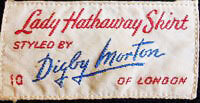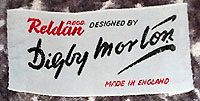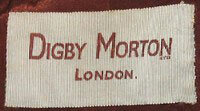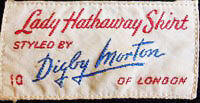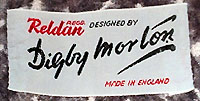Digby Morton (1906-1983) was born in Dublin in 1906. He studied art and architecture at the Metropolitan School of Art and Architecture before moving to London in 1928. Here he worked as a sketch artist for Jay’s fashion store of Oxford Street before founding the tailoring firm of Lachasse in the same year. After five years at Lachasse, he established his own house. He was well-known for his tailoring and particularly for suits and coats. He used traditional fabrics such as tweed and Aran knits, combining them with more feminine tailoring and silk blouses to produce flattering, elegant pieces.
During WW2 Morton and several other British couturiers formed the Incorporated Society of London Fashion Designers and were responsible for designing collections of Utility garments for women across the country. It was a canny piece of propaganda to soften the blow of severe rationing. The restrictions on the use of fabric required ingenuity and these designers achieved this very successfully.
Morton was also invited to design uniforms for the Women’s Voluntary Service during the war.
In 1947 he established an export branch of the Digby Morton business which enabled him to market his clothes to the United States. He was also guest designer at Jacqmar in 1950 and designer/vice president of the Hathaway Shirt Company in New York. He continued with his own label until its closure in 1957. In 1958 he became the Design Director of Reldan-Digby Morton which produced classic sportswear. He finally retired in 1973 and died in London ten years later.
Written by Emmapeelpants

